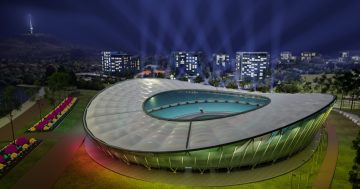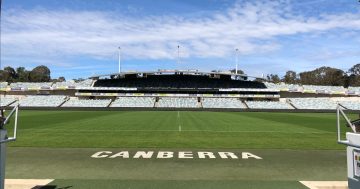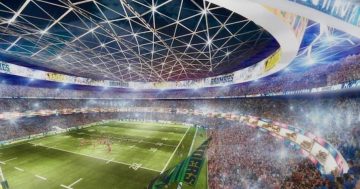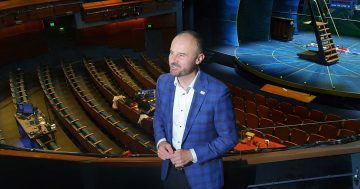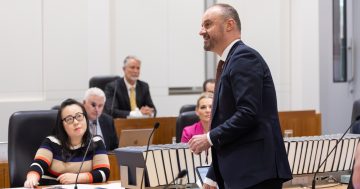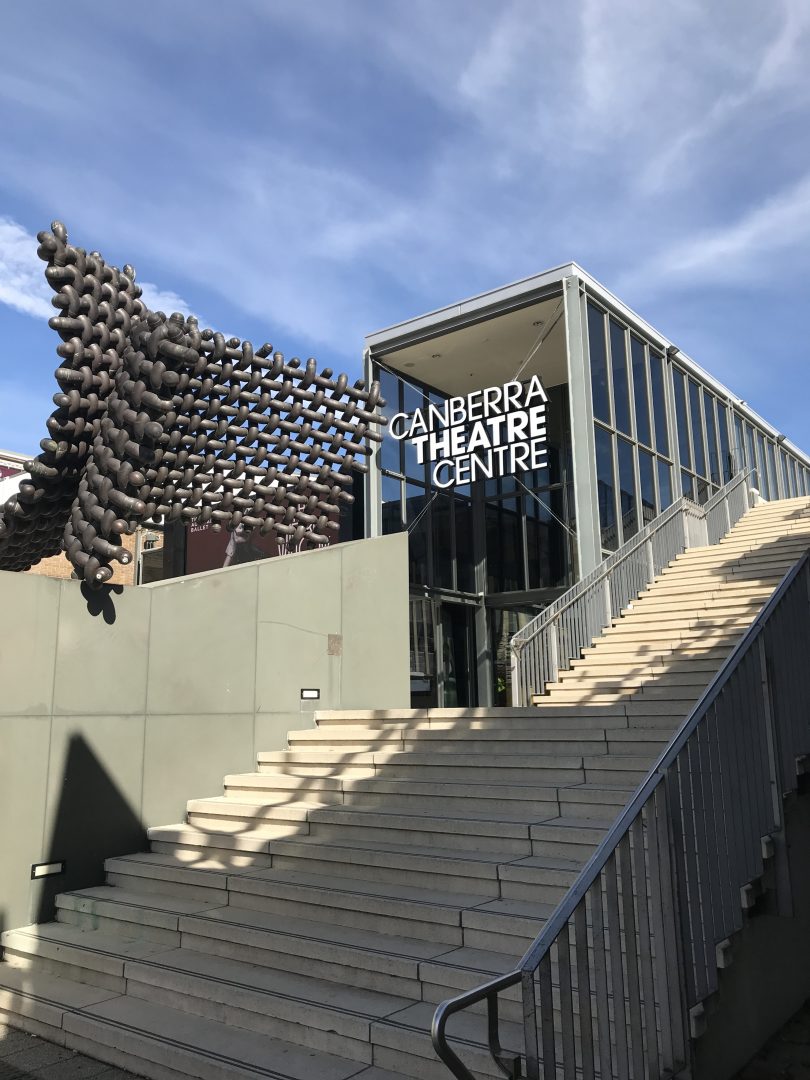
Is an outdated Canberra Theatre holding back our arts economy? Photo: Genevieve Jacobs.
Another miserable last few weeks of footy with almost nobody watching. Around 5000 cold Canberrans saw the Brumbies play out a heart-breaking loss a few weeks ago at Bruce before trudging back inside to nurse their injuries in a miserable season.
Cue the calls for a new roofed stadium in Civic that will, according to its proponents, create jobs, boost crowds and the local economy. Raiders coach Don Furner says a new stadium would “definitely make the city a lot more vibrant”.
So how does a crowd of 32,000 with 24% interstate visitors stack up by comparison?
Pretty good? Pretty invigorating for the ACT economy? Those are actually the figures for last year’s three week Mamma Mia run at the Canberra Theatre, and they provide solid backing for the idea that the arts can drive our economy as hard as any sports facility.
Mamma Mia’s producer Louise Withers took a calculated gamble that Canberra could open her national production last year and says that it paid off in spades for the ACT. She reckons that in addition to locals, each of those interstate visitors spent around $500 to $750, and points out that happened night after night, not just in the course of a single weekend.
And, Withers says, there’s a significant opportunity over the next few years to bring in more big shows. “There are only two major commercial houses in Sydney and three in Melbourne, one of which is about to be occupied by the Harry Potter show for a long time. The venues in Brisbane and Adelaide have resident opera companies and orchestras. As government subsidised houses, they’re mandated to cover the whole arts spectrum, so it’s hard to book them.”
“If someone is putting together a major tour, Canberra could bridge that gap. It won’t make a whole stack of money on its own, not enough to pay the bills, but it allows a show to continue its tour and to be viable nationally.”
The catch is that the Canberra Theatre is just not big enough. It’s too old and there’s not enough room onstage, so many commercial producers and even ballet and opera companies shy away. Former Cultural Facilities Corporation chair John Hindmarsh has argued passionately that a new theatre complementing the old one would also create a “Town Hall” venue, making room for everything from school prize-givings to blockbusters.

The Canberra Theatre stage. Photo: Canberra Theatre website.
Marcus Westbury’s creative arts strategy is credited with reviving the post-industrial Newcastle economy. “What we found was that creative enterprise played a significant role in helping the city reinvent its image. That in turn seeded new business and new activity in the city, which has flowed through to tourism, inward investment and other things that benefit a city. If you don’t invest in arts culture then you can’t harvest that.”
As a hometown Newcastle boy brought up on Rugby League, Westbury says it’s wrong to think that one form of entertainment has more intrinsic value than another.
“Stadiums are not hospitals or schools. They are also discretionary income that we spend to bring people together. In some ways, they are more similar than different to theatres or galleries. ABS data shows that more people attend arts events than sports events in Australia, ranging from school concerts to Ed Sheeran.”
“I live in Melbourne now and it’s common to see people wandering through the National Gallery of Victoria in their footy scarves. I think people stop going to the football when their team is losing, not because the stadium is rubbish.”

Critics say a new roofed stadium in Civic would bring back the crowds.
So how do the costs stack up? Roughly, $350 million for a roofed stadium in Civic, and $150 million at most for a new theatre. A private consortium is urging the ACT government to fast-track plans for a new city stadium, while the City Renewal Authority says we need to focus on developing an action plan for the Civic arts and cultural precinct. The chief minister has also floated the idea of a smaller 7000-seat arena in Civic that would host indoor sports, concerts, conferences and exhibitions.
But this is a perennially cash-strapped government that’s funding light rail and financing the Mr Fluffy buyout. It’s unlikely that we’ll see both a new theatre and a new Civic stadium anytime soon.
Louise Withers again: “When Matilda (the musical) ran in Sydney, 350,000 people saw it. How many stadiums is that? You have to develop offerings that are unique to Canberra and nowhere else, and opening Mamma Mia here was that. It showed a very clear path for economic returns.”
How would you spend the money? Does a stadium or a theatre make more sense for Canberra?













